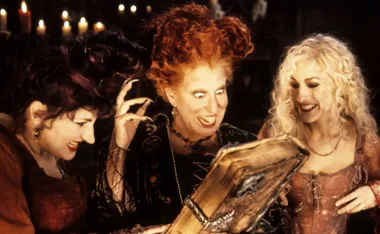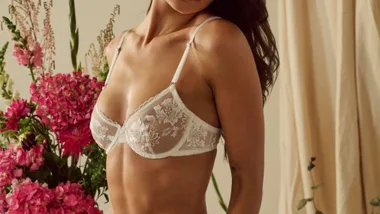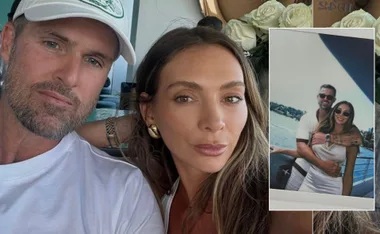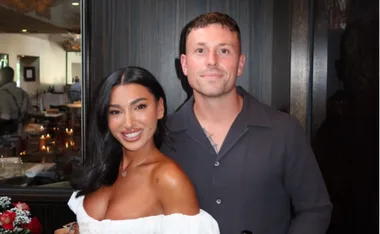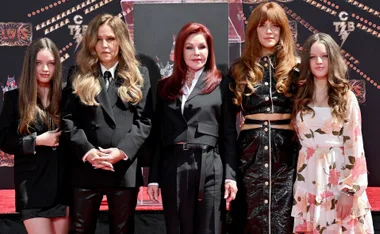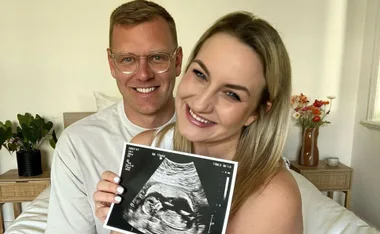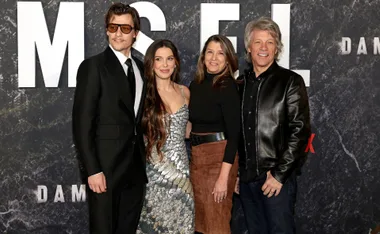One in 100 Australians suffer from coeliac disease, an auto-immune disorder caused by gluten in food. Dietician Karen Inge reports on the popularity of gluten-free diets and who actually needs to be on them.
It’s amazing how the popularity and availability of gluten-free foods has increased in recent years.
No longer do you have to hunt for a gluten-free bread mix in an obscure health food shop; these days most bakeries will provide gluten-free bakery items, most cafes will do the same, the supermarkets stock an array of gluten-free products and dining out has become much easier with many restaurants providing gluten-free fare.
In pictures: Gluten-free recipes
Many more people seem to be following a gluten-free diet than ever before. Those with coeliac disease must follow a strict gluten-free diet to avoid causing harm to their body, but there are others who simply avoid gluten because they have bowel discomfort or simply feel better eliminating gluten from their diet.
Of concern is that an increasing number of people are turning to a gluten-free diet without a medical assessment and proper diagnosis. These people may either be unnecessarily restricting their diet or not be getting the appropriate medical management of their condition.
Without doubt there appears to be a lot of uncertainty surrounding the need for a gluten-free diet and coeliac disease. Many people have heard of coeliac disease, but are unsure of what it is, what the symptoms are, how it is diagnosed and treated and what hope there is for the future.
What is coeliac disease?
Coeliac disease (pronounced seel-ee-ak) is an auto-immune disorder which affects one in 100 people in Australia.
It is nearly twice as common as Type 1 diabetes and on a par with stroke rates. Alarmingly, 75 per cent of those with the condition remain undiagnosed. That is over 157,000 Australians don’t know they have it and simply either put up with feeling “out of sorts” or have no symptoms at all and are walking time bombs with regards to their longer term health.
Auto-immunity occurs when the body mistakenly produces antibodies that damage its own tissues. In the case of coeliac disease, it is a chronic inflammatory disease of the small intestine (bowel), where the body mistakenly produces an immune reaction to dietary gluten, the protein fraction of the grains wheat, barley, rye and oats. This reaction damages the intestinal lining, compromising nutrient absorption, growth and development. Gluten is effectively a poison to someone with coeliac disease.
The symptoms
Coeliac disease may cause a number of symptoms that can be confused with other conditions like gastroenteritis, chronic fatigue and irritable bowel syndrome. Common symptoms or outcomes include:
Iron, folate, Vitamin B12 or D deficiency.
Anaemia.
Gastrointestinal symptoms, such as excessive flatulence, abdominal pain, nausea, diarrhoea, constipation, bloating or pain.
Skin rash (dermatitis herpetiformis).
Tooth enamel problems.
Fatigue, sleepiness.
Lack of concentration.
Depression.
Osteoporosis.
Other auto-immune disease, such as type 1 diabetes.
Weight loss.
Infertility (especially in men).
Associated cancers.
Sometimes, children with coeliac disease don’t have any of these symptoms and just seem “out of sorts”.
How to get diagnosed
The current “gold standard” diagnosis is through your doctor. It is extremely important that diagnosis is conducted under medical supervision. The gene test can assist in confirming whether HLA-DQ8 and/or HLA-DQ2 are present.
Following release of new research findings and its launch in 2003, HLA-DQ gene testing was launched in Victoria and has gradually been incorporated in coeliac disease testing.
Over 99 per cent of coeliac disease is associated with HLA-DQ2 or HLA-DQ8; two in three Australians do not have these genes and are effectively unable to develop coeliac disease.
The gene test is not diagnostic, but can be used to exclude coeliac disease (only one in 30 people who carry a coeliac gene will develop coeliac disease).
Blood test
If both or either of the genes are present, it is recommended that a GP arranges a blood test if coeliac disease is suspected.
It is important to be “gluten challenged” when taking the test that is, having eaten the equivalent of four slices of wheat bread a day for six weeks prior (two slices a day for children). If the test comes back positive, your GP will arrange further tests.
Coeliac disease should not be diagnosed by blood test alone.
Biopsy
Following a positive blood result, or if a GP still suspects coeliac disease, referral to a gastroenterologist is then arranged so that biopsies of the small intestine can be taken to confirm a diagnosis of coeliac disease and to ascertain the extent of damage present.
This is a simple day procedure requiring only a light anesthetic. A diagnosis of coeliac disease can only be made by small bowel biopsy.
Although coeliac disease affects men, women and children equally, it appears that females between the ages of 15 and 74 account for the vast majority of individuals lodging Medicare claims for coeliac disease blood and gene tests.
It would appear that children and males are tested for coeliac disease substantially less than would be expected.
Managing coeliac disease?
As gluten is effectively poisonous to someone with coeliac disease, the only treatment at this time is a strict gluten-free diet (see chart).
People with coeliac disease remain sensitive to gluten throughout their life, so in this sense, they are never cured.
There is no correlation between symptoms and bowel damage: despite the absence of symptoms, damage to the small intestine (bowel) can still occur if gluten is ingested.
A crumb of bread the size of a baby’s fingernail can damage the lining of the small bowel. The small bowel lining steadily repairs and the absorption of nutrients from food returns to normal once gluten is removed from the diet. People with coeliac disease should remain otherwise healthy as long as they adhere to a gluten-free diet, however, relapse occurs if gluten is reintroduced.
The Coeliac Society of Australia offers support and advice to those who have been clinically diagnosed with coeliac disease and can be contacted via the Coeliac Society website.
In the long term
The long-term consequences of coeliac disease are related to poor nutrition and mal-absorption of nutrients. Untreated coeliac disease can lead to chronic poor health, osteoporosis, infertility, miscarriage, depression and tooth enamel defects.
There is also a small, but real, increased risk of certain forms of cancer, such as lymphoma of the small bowel. In children, undiagnosed coeliac disease can cause lack of proper development, short stature and behavioural problems.
Fortunately, timely diagnosis of coeliac disease and treatment with a gluten-free diet can prevent or reverse many of these problems.
Related: Trials promising for celiac sufferers
Hopes of a cure
Some amazing research is being conducted throughout Australia to better understand coeliac disease and discover a cure.
The establishment of the Coeliac Research Fund (CRF) in 2008 was a major step in raising awareness, diagnosis rates and supporting vital research.
By collaboratively working with The Coeliac Society, health-care professionals and those with an interest in the management of coeliac disease, the CRF is committed to effecting change. Funding is required if the CRF are to continue to make a difference and information on how to support and find a cure can be found on the CRF website.
Your say: Do you know someone who is suffering from coeliac disease?
Video: The gluten-free diet
Newsletter conversion description. Get the latest in your inbox.























